Related Research Articles

The Easter Rising, also known as the Easter Rebellion, was an armed insurrection in Ireland during Easter Week in April 1916. The Rising was launched by Irish republicans against British rule in Ireland with the aim of establishing an independent Irish Republic while the United Kingdom was fighting the First World War. It was the most significant uprising in Ireland since the rebellion of 1798 and the first armed conflict of the Irish revolutionary period. Sixteen of the Rising's leaders were executed starting in May 1916. The nature of the executions, and subsequent political developments, ultimately contributed to an increase in popular support for Irish independence.
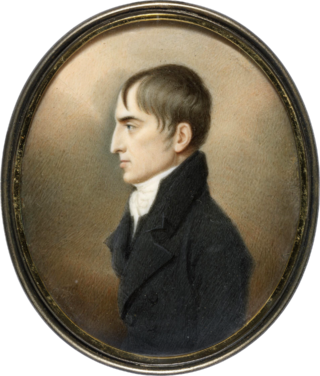
Robert Emmet was an Irish Republican, orator and rebel leader. Following the suppression of the United Irish uprising in 1798, he sought to organise a renewed attempt to overthrow the British Crown and Protestant Ascendancy in Ireland, and to establish a nationally representative government. Emmet entertained, but ultimately abandoned, hopes of immediate French assistance and of coordination with radical militants in Great Britain. In Ireland, many of the surviving veterans of '98 hesitated to lend their support, and his rising in Dublin in 1803 proved abortive.
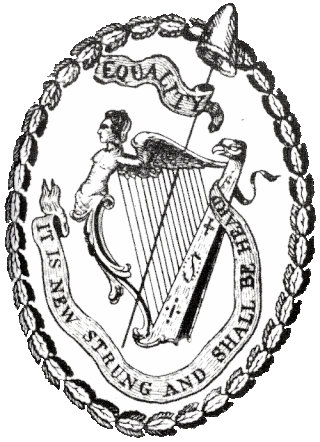
The Society of United Irishmen was a sworn association in the Kingdom of Ireland formed in the wake of the French Revolution to secure "an equal representation of all the people" in a national government. Despairing of constitutional reform, and in defiance both of British Crown forces and of Irish sectarian division, in 1798 the United Irishmen instigated a republican rebellion. Their suppression was a prelude to the abolition of the Irish Parliament in Dublin and to Ireland's incorporation in a United Kingdom with Great Britain. An attempt, following the Acts of Union, to revive the movement and renew the insurrection led to an abortive rising in Dublin in 1803.
The City of Dublin can trace its origin back more than 1,000 years, and for much of this time it has been Ireland's principal city and the cultural, educational and industrial centre of the island.

Roscrea is a market town in County Tipperary, Ireland, which in 2016 had a population of 5,446. Roscrea is one of the oldest towns in Ireland, having developed around the 7th century monastery of Saint Crónán of Roscrea, parts of which remain preserved today.

William Wickham PC PC (Ire) was a British spymaster and a director of internal security services during the French Revolutionary Wars. He was credited with disrupting radical conspiracies in England but, appointed Chief Secretary for Ireland, failed in 1803 to anticipate a republican insurrection in Dublin. He ended his career in government service in 1804, resigning his post in Ireland where, privately, he denounced government policy as "unjust" and "oppressive".

Anne Devlin was an Irish republican who in 1803, while his ostensible housekeeper, conspired with Robert Emmet, and with her cousin, the rebel outlaw Michael Dwyer to renew the United Irish insurrection against the British Crown. When their plans for a rising in Dublin, the Irish capital, misfired, she endured torture and imprisonment. Outrage over her treatment secured her release in 1806, after which she was assisted for a period by the Emmet family. A long working life as a laundress ended in destitution.
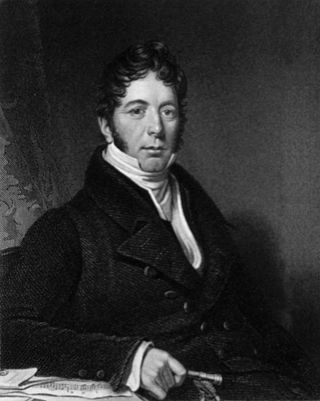
Sir John Andrew Stevenson was an Irish composer. He is best known for his piano arrangements of Irish Melodies with poet Thomas Moore. He was granted an honorary doctorate by the University of Dublin and was knighted in April 1802.
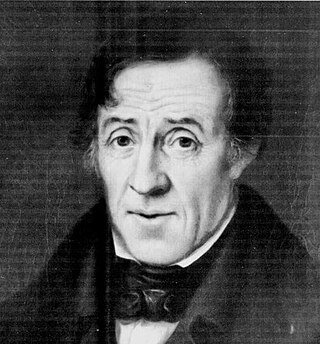
James "Jemmy" Hope was a radical democrat in Ireland who organised among tenant farmers, tradesmen and labourers for the Society of the United Irishmen. In the Rebellion of 1798 he fought alongside Henry Joy McCracken at the Battle of Antrim. In 1803 he attempted to renew the insurrection against the British Crown in an uprising coordinated by Robert Emmett and the new republican directorate in Dublin. Among United Irishmen, Hope was distinguished by his conviction that "the fundamental question at issue between the rulers and the people" was "the condition of the labouring class".
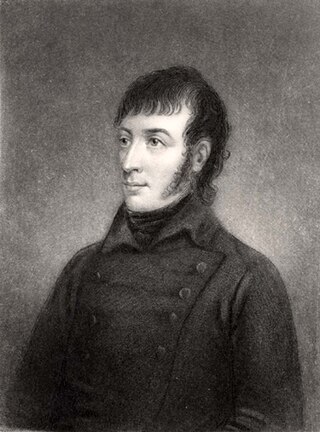
Thomas Paliser Russell was a founding member, and leading organiser, of the United Irishmen marked by his radical-democratic and millenarian convictions. A member of the movement's northern executive in Belfast, and a key figure in promoting a republican alliance with the agrarian Catholic Defenders, he was arrested in advance of the risings of 1798 and held until 1802. He was executed in 1803, following Robert Emmet's aborted rising in Dublin for which he had tried, but failed, to raise support among United and Defender veterans in the north.

Francis Johnston was an Anglo/Irish architect, best known for building the General Post Office (GPO) on O'Connell Street, Dublin.
William McMillen, aka Liam McMillen, was an Irish republican activist and an officer of the Official Irish Republican Army (OIRA) from Belfast, Northern Ireland. He was killed in 1975, in a feud with the Irish National Liberation Army (INLA).

MylesByrne was an insurgent leader in Wexford in the Irish Rebellion of 1798 and a fighter in the continued guerrilla struggle against British Crown forces in the Wicklow Hills until 1802. In 1803 collaborated closely with Robert Emmet in plans for a renewed insurrection in Dublin. After these misfired, he took a commission in Napoleon’s Irish Legion, seeing action in the Low Countries, Spain and at the Battle of Leipzig. Under the Bourbon Restoration he was deployed to Greece, and retired as a chef de bataillon. In his later years, he was the Paris correspondent for the Young Irelander paper The Nation, and dictated his memoirs. In these, he advanced the image of the United Irishmen as a cohesive revolutionary organisation dedicated to the achievement of a national democratic government.

Thomas Street is a street in The Liberties in central Dublin, Ireland.
Oliver Bond was an Irish merchant and a member of the Leinster directorate of the Society of United Irishmen. He died in prison following the Irish Rebellion of 1798.
John Henry Petty, Earl Wycombe, 2nd Marquess of Lansdowne, was a British Whig politician who in Ireland was suspected of complicity in a republican conspiracy. In 1786, his father, the former British Prime Minister Lord Shelbourne, secured him an English seat in the House of Commons. After witnessing revolutionary events in Paris, he began to establish an independent reputation as a friend of reform, critical of the war with France and of the suppression of democratic agitation at home. In 1797 he repaired to his father's estates in Ireland where his political associations brought him under government surveillance.
John Allen was a United Irishman, committed to an independent Irish republic. After a failed attempt with Robert Emmet in 1803 to renew the United Irish insurrection crushed five years before, he went into French exile and served with distinction in the army of Napoleon.
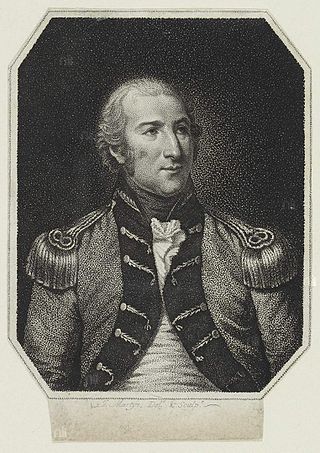
Henry Charles Sirr was an Anglo-Irish military officer, policeman, merchant and art collector. He played a prominent role in suppressing the Irish Rebellion of 1798, which included personally killing Society of United Irishmen leader Lord Edward FitzGerald, who Sirr alleged had been resisting arrest.

The Irish rebellion of 1803 was an attempt by Irish republicans to seize the seat of the British government in Ireland, Dublin Castle, and trigger a nationwide insurrection. Renewing the struggle of 1798, they were organised under a reconstituted United Irish directorate. Hopes of French aid, of a diversionary rising by radical militants in England, and of Presbyterians in the north-east rallying once more to the cause of a republic were disappointed. The rising in Dublin misfired, and after a series of street skirmishes, the rebels dispersed. Their principal leader, Robert Emmet, was executed; others went into exile.
Ireland was involved in the Coalition Wars, also known as the French Revolutionary (1792–1802) and Napoleonic (1804–1815) Wars. The island, then ruled by the United Kingdom, was the location of the Irish Rebellion of 1798, which was aided by the French. A minor, abortive uprising in 1803 resulted in the death of Ireland's chief justice, although this rising was not aided by the French.
References
- ↑ "Henry Howley-A forgotten Roscrea Patriot". independent. Retrieved 17 October 2021.
- ↑ Geohagen, Patrick (2009). "Howley, Henry | Dictionary of Irish Biography". www.dib.ie. Retrieved 17 October 2021.
- ↑ Ridgeway, Patrick (2012). A Report of The Trial of Henry Howley, Upon on Indictment for High Treason. Gale, Making of Modern Law. ISBN 9781275513181.
. Dictionary of National Biography . London: Smith, Elder & Co. 1885–1900.